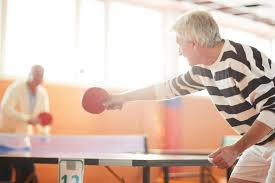
Benefits of Kinesiology and Biomechanics in Table Tennis: Kinesiology Benefits: 1. Improved stroke technique and efficiency 2. Enhanced movement patterns and footwork 3. Increased power and speed generation 4. Better balance and coordination 5. Reduced injury risk Biomechanics Benefits: 1. Optimized racket angle and movement 2. Enhanced spin and speed control 3. Improved serve and receive techniques 4. Efficient energy transfer and movement 5. Reduced fatigue and improved endurance Combined Benefits: 1. Enhanced overall performance 2. Improved consistency and accuracy 3. Increased agility and reaction time 4. Better adaptability to different playing styles 5. Reduced injury risk and improved longevity Practical Applications: 1. Motion analysis and correction 2. Strength and conditioning programs 3. Flexibility and mobility training 4. Biomechanical analysis of strokes and movements 5. Customized training programs Benefits for Table Tennis Players: 1. Improved technique and performance ...







